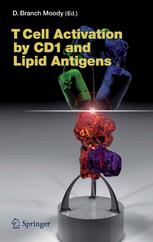

Most ebook files are in PDF format, so you can easily read them using various software such as Foxit Reader or directly on the Google Chrome browser.
Some ebook files are released by publishers in other formats such as .awz, .mobi, .epub, .fb2, etc. You may need to install specific software to read these formats on mobile/PC, such as Calibre.
Please read the tutorial at this link: https://ebookbell.com/faq
We offer FREE conversion to the popular formats you request; however, this may take some time. Therefore, right after payment, please email us, and we will try to provide the service as quickly as possible.
For some exceptional file formats or broken links (if any), please refrain from opening any disputes. Instead, email us first, and we will try to assist within a maximum of 6 hours.
EbookBell Team

5.0
90 reviewsFor decades, T cells were thought to solely respond to protein-derived antigens. However, the discovery of the CD1 antigen presenting system shows how antigen presenting cells can display lipid antigens to T cells. Crystal structures show that CD1 proteins accomplish this function by inserting lipids into a hydrophobic groove on the distal surface of the protein, forming CD1-lipid complexes that act as ligands for T cell receptors. CD1-reactive T cells with conserved (NK T cells) or diverse T cell receptors possess cytokine secretion and other effector mechanisms that influence many aspects of immune response. There is increasing evidence that the CD1 system has been conserved throughout mammalian evolution and is capable of presenting structurally diverse diacyglycerol, sphingolipid, polyisoprenol and lipopeptide antigens. These features of CD1 antigen presentation systems now point to a new and expanded view of the natural function of ab T cells, which involves surveillance of both the protein and lipid components of target cells. Further, cellular systems that were previously considered to have functions in lipid metabolism can now be studied in context of their immunological functions. This volume provides a comprehensive discussion of these basic aspects of CD1 biology and summarizes the most recent research into the role of CD1 in infectious, autoimmune, allergic and neoplastic disease.